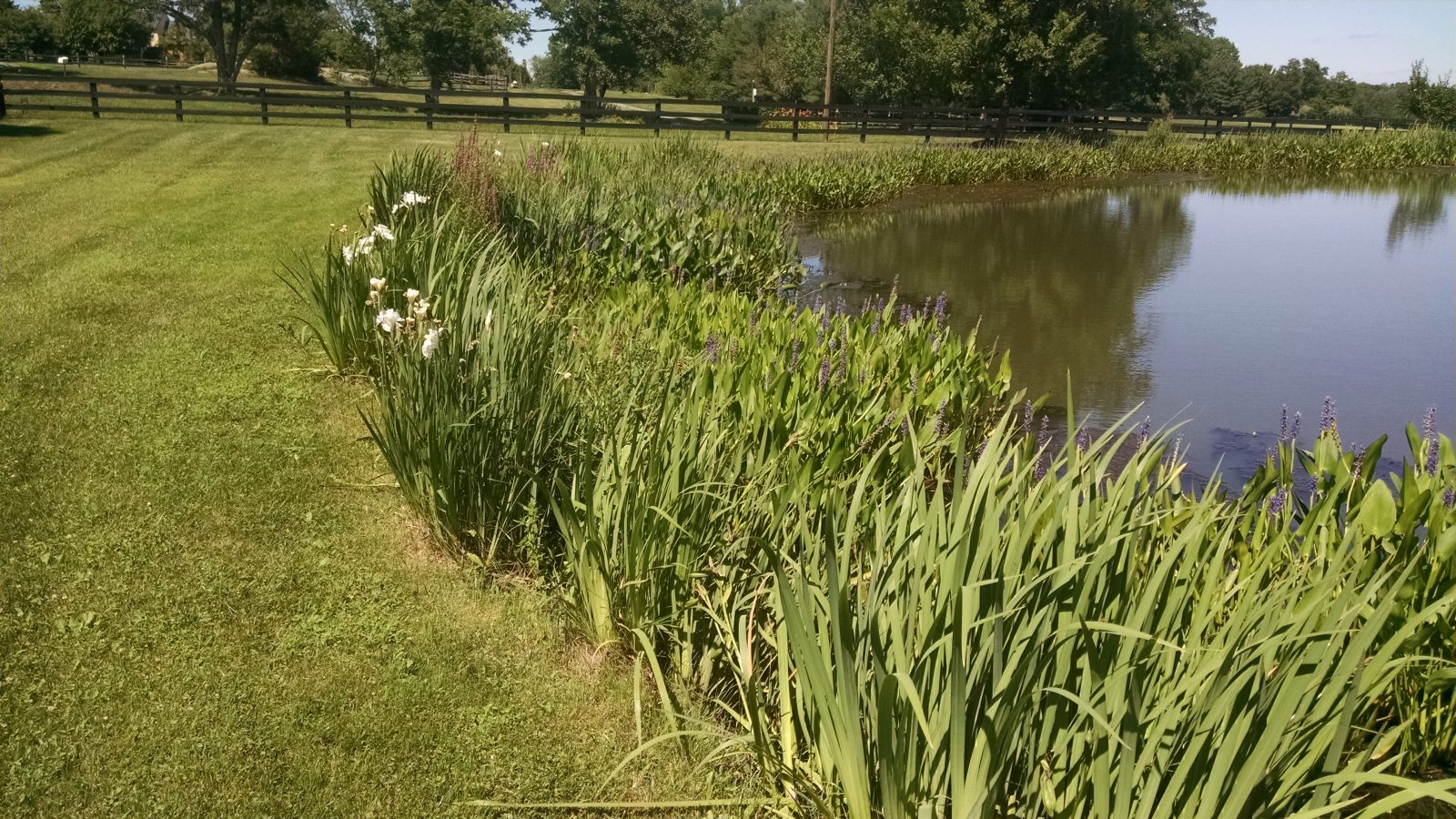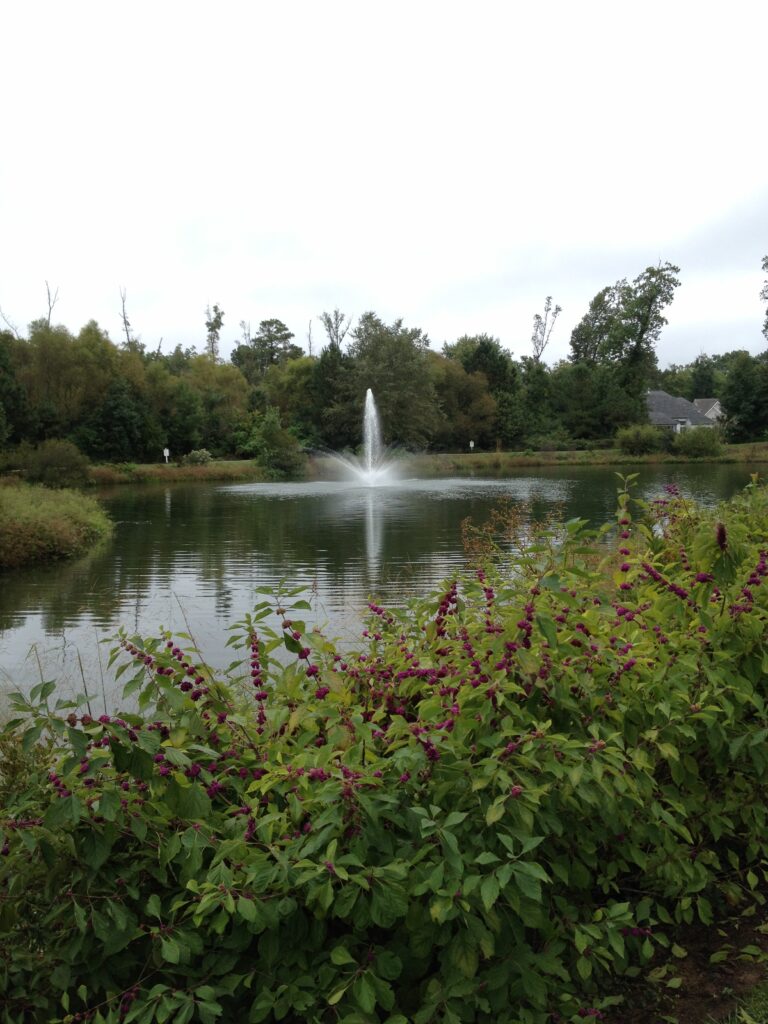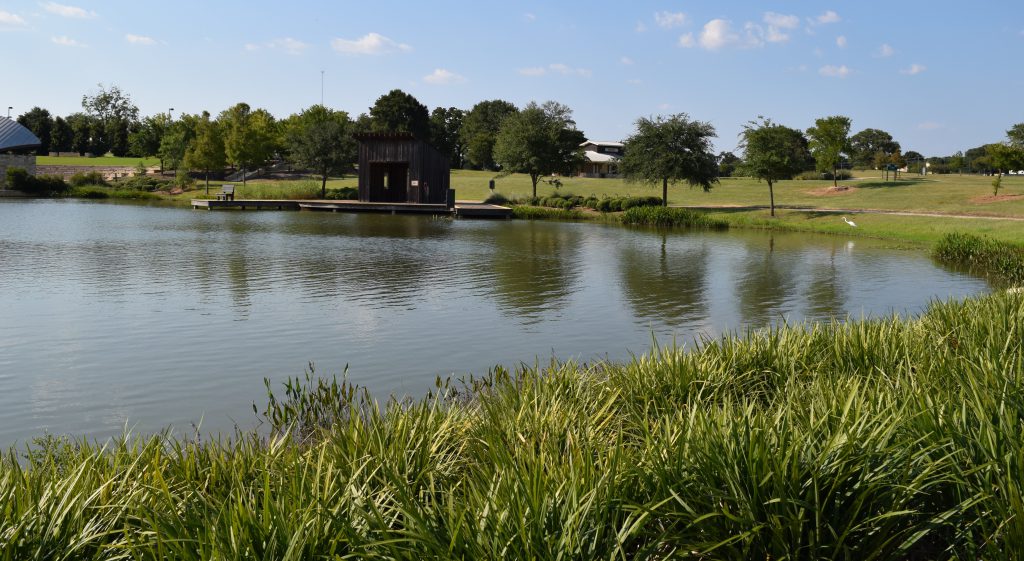
Winter Buffer Trimming for A Healthy Pond or Lake This Spring
With the coming winter season, it is important to take a closer look at the vegetation, or buffer zone, surrounding your water body. Plants in this area take up nutrients from fertilized lawns directly adjacent to the lake or pond, and help filter the nutrient-rich rainfall runoff that flows into the water body from the surrounding watershed. Buffer zone vegetation does not need to be excessively high, and an annual cutting is recommended to maintain the aesthetic appeal of the pond. Too much cutting or clearing of the vegetation can actually result in increased nutrient loading of the water, which will ultimately lead to future pond algae blooms.
In addition to acting as a natural filter for runoff, a buffer zone can also help prevent shoreline erosion. The plants along the shoreline help stabilize the soil and prevent large amounts of sediment from flowing into the pond. Over time, the excessive runoff of sediment could greatly reduce the depth of your lake or pond and produce significant problems. The cost to correct these problems through dredging and other similar measures can be quite costly.

Should Your Buffer Include Woody Vegetation?
The type, size, and location of the vegetation that you allow to grow in that buffer zone can have a direct impact on your water body’s health. More specifically for this time of year, the amount and distribution of the woody vegetation should be of concern. Woody vegetation can destabilize banks, dry out soil, and add large amounts of unwanted nutrients to your water body. This can lead to the growth of unwanted aquatic plants and add to the build-up of organic sludge at the bottom of your water body. Trees, shrubs, scrub brush and other woody vegetation are the most common form of woody vegetation found in buffer zones should be managed and removed. Due to their hardy nature, they can be extremely difficult to control. At this time of year, many woody plant species slow down their growth and shed leaves. Though woody vegetation can sometimes be aesthetically pleasing, it can also cause on-going water quality issues.

Why You Should Trim Your Shoreline Buffer In the Winter
Winter is an excellent time to consider cutting back or clearing any unwanted shoreline vegetation. Water temperatures are very low and shoreline growth has ceased, for the time being, thus debris that may fall into your lake or pond will have limited adverse effects. However, even in the winter, every effort should be made to keep cuttings from falling into the pond and sinking to the bottom. This influx of organic matter will result in the potential for future algae blooms as it breaks down and releases utilizable nutrients into the water column. It is these nutrients that are the primary fuel for pond algae growth.
The Benefits of A Healthy, Robust Buffer
Overall, properly maintained buffer zones can go a long way in helping to prevent problems for your pond. The best part of all, establishing these buffer zones around the edge of your pond takes very little effort, requires little maintenance, will likely reduce the costs associated with mowing and trimming along the edge of the pond on a weekly basis in the warmer months, and will produce significant beneficial results for your pond.
Explore Shoreline Management Best Practices
SOLitude Lake Management is a nationwide environmental firm committed to providing sustainable solutions that improve water quality, enhance beauty, preserve natural resources and reduce our environmental footprint. SOLitude’s team of aquatic resource management professionals specializes in the development and execution of customized lake, pond, wetland and fisheries management programs that include water quality testing and restoration, nutrient remediation, algae and aquatic weed control, installation and maintenance of fountains and aeration systems, bathymetry, shoreline erosion restoration, mechanical harvesting and hydro-raking, lake vegetation studies, biological assessments, habitat evaluations, and invasive species management. Services and educational resources are available to clients nationwide, including homeowners associations, multi-family and apartment communities, golf courses, commercial developments, ranches, private landowners, reservoirs, recreational and public lakes, municipalities, drinking water authorities, parks, and state and federal agencies. SOLitude Lake Management is a proud member of the Rentokil Steritech family of companies in North America.









